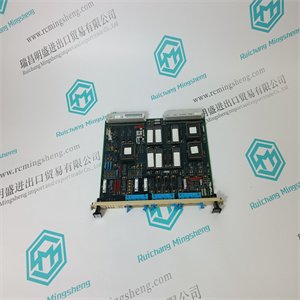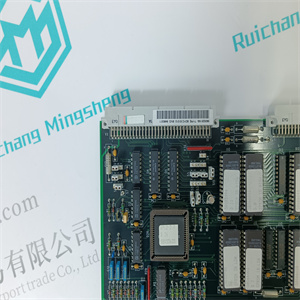产品展示
联系我们
联系人:麦女士
手机:+86 15270269218
电话:
Q Q:3136378118
邮箱:stodcdcs@gmail.com
地址:江西省九江市瑞昌市东益路23号赛湖农商城401号
NIMF02
事实上,标准IEC 61439-1规定了与前一版本相同的温升限值,在温升试验期间不得超过该限值。考虑到环境温度不得超过+40°C,且其24小时内的平均值不得超过+35°C,采用这些温升限值。下表显示了针对组件的不同部件,标准给出的温升限值。
组件零件温升K内置组件a)(*)符合单个组件的相关产品标准要求,或符合制造商的说明f),考虑到外部绝缘导体装配端子的温度70 b)母线和导体受到以下限制:-导电材料的机械强度g);-对相邻设备可能产生的影响;-与导体接触的绝缘材料的允许温度极限;-导体温度对与其相连的设备的影响对于插入式触点,触点材料的性质和表面处理。手动操作方式:-金属15 c)-绝缘材料25 c)可接近的外部外壳和盖子:-金属表面30 d)-绝缘表面40 d)插头和插座式连接的离散布置,由构成e部分的相关设备的部件的限制决定a)术语“内置部件”指:-常规开关设备和控制设备电子子组件(例如整流桥、印刷电路);-设备部件(如调节器、稳压电源装置、运算放大器)。b) 70 K的温升极限是基于10.10的常规试验得出的值。在安装条件下使用或测试的组件可能具有连接件,其类型、性质和配置将与测试所采用的不同,并且可能会导致不同的端子温升,并且可能需要或接受不同的端子温升。如果内置组件的端子也是外部绝缘导线的端子,则应采用相应温升限值中较低的一个。c) 只有在组件打开后才能接近的组件内的手动操作装置,例如不经常操作的抽出手柄,允许在这些温升极限上增加25 K。d) 除非在正常操作过程中可接近但无需接触的盖子和外壳中另有规定,否则允许温升极限增加10 K。距离组件底座超过2m的外表面和零件被视为无法接近。e) 这允许设备(例如电子设备)具有一定程度的灵活性,该设备的温升限制不同于通常与开关设备和控制设备相关的温升限制。f) 对于根据10.10进行的温升试验,考虑到部件制造商施加的任何额外测量点和限制,原始制造商必须规定温升极限。g) 假设满足列出的所有其他标准,裸铜母线和导线的大温升不得超过105 K。注:105 K与铜可能发生退火的温度有关。其他材料可能有不同的大温升。A.



NIMF02
As a matter of fact, the Standard IEC 61439-1 prescribes compliance with the same temperature-rise limits of the previous version, limits which must not be exceeded during the temperature-rise test. These temperature-rise limits are applied taking into consideration an ambient temperature which must not exceed +40 °C and its average value referred to a 24 hour period shall not exceed +35 °C. The following Table shows for the different components of the assembly, the temperature-rise limits given by the Standard.
Parts of assemblies Temperature-rise K Built-in components a) (*) In accordance with the relevant product Standard requirements for the individual components or, in accordance with the manufacturer’s instructions f), taking into consideration the temperature in the assembly Terminals for external insulated conductors 70 b) Busbars and conductors Limited by: - mechanical strength of conducting material g); - possible effects on adjacent equipment; - permissible temperature limit of the insulating materials in contact with the conductor; - the effect of the temperature of the conductor on the apparatus connected to it; - for plug-in contacts, nature and surface treatment of the contact material. Manual operating means: - of metal 15 c) - of insulating materials 25 c) Accessible external enclosures and covers: - metal surfaces 30 d) - insulating surfaces 40 d) Discrete arrangements of plug and socket-type connections Determined by the limits of those components of the related equipment of which they form part e) a) The term “built-in components” means: - conventional switchgear and controlgear; - electronic sub-assemblies (e.g. rectifier bridge, printed circuit); - parts of the equipment (e.g. regulator, stabilized power supply unit, operational amplifier). b) The temperature rise limit of 70 K is a value based on the conventional test of 10.10. An ASSEMBLY used or tested under installation conditions may have connections, the type, nature and disposition of which will not be the same as those adopted for the test, and a different temperature rise of terminals may result and may be required or accepted. Where terminals of the built-in component are also the terminals for external insulated conductors, the lower of the corresponding temperature-rise limits shall be applied. c) Manual operating means within assemblies which are only accessible after the assembly has been opened, for example draw-out handles, which are operated infrequently, are allowed to assume a 25 K increase on these temperature-rise limits. d) Unless otherwise specified in the case of covers and enclosures which are accessible but need not be touched during normal operation, an increase in the temperature-rise limits by 10 K is permissible. External surfaces and parts over 2 m from the base of the ASSEMBLY are considered inaccessible. e) This allows a degree of flexibility in respect to equipment (e.g. electronic devices) which is subject to temperature-rise limits different from those normally associated with switchgear and controlgear. f) For temperature-rise tests according to 10.10 the temperature-rise limits have to be specified by the Original Manufacturer taking into account any additional measuring points and limits imposed by the component manufacturer. g) Assuming all other criteria listed are met a maximum temperature rise of 105 K for bare copper busbars and conductors shall not be exceeded. Nota: 105 K relates to the temperature above which annealing of copper is likely to occur. Other materials may have a different maximum temperature rise. A
相关产品













